Illustration has been a cornerstone of our visual culture for centuries, as a way for artists to visually depict stories and concepts. Like much of art, illustration can be an objective reflection of the world around us or a creative interpretation of abstract ideas. Different illustration styles can be achieved through a variety of manual or digital media, each with the ability to evoke emotion, convey information, and transform our culture.
What is Illustration?
Illustration is a means of visually depicting an idea, story, or message. In the classical sense, illustration has been most commonly used as a visual accompaniment to a text (be it a picture in a children’s book, or a drawing within a religious scripture) meant to depict a scene or to decoratively adorn a page. Throughout history, however, different types of illustration have evolved and been adapted for myriad purposes. Much of the contemporary illustration you likely stumble across is abstract or conceptual– it helps readers visualize an idea or abstract concept in a more figurative way, as in an editorial illustration for a cultural think piece.
So how does one distinguish illustration from graphic design or fine art?
While there are certainly areas of overlap, graphic design is more commonly understood to be both the medium and the message itself, rather than merely accompanying a message. For example, a graphic design could be an event poster that communicates critical information about the date and details of a concert, while interspersing the text with creative visual elements. A work of art, on the other hand (such as a painting or sketching), can be a standalone piece– and one that doesn’t require the contextualization of an idea, story, or other bit of written communication. But the definitive line between illustration and art is admittedly blurred– and since different types of illustrations can convey powerful emotions through a wide range of media, from oil painting to vector graphics, you may see the terms used interchangeably.
What are the Types of Illustration?
Illustration has been around for centuries, or — depending on how you’d classify cave paintings and ancient hieroglyphics– millennia. “Traditional” illustration, defined as work done by hand, has been honed through the ages by a variety of manual means — charcoal, paint, ink, lead, and naturally available surfaces like stone and wood helped define early styles of illustration. Today, modern illustration techniques typically involve the aid of computers, precision color printers, and even digital animation programs.
Traditional Illustration
Much of our modern definition of “traditional” illustration stems from the advent of the printing press in the middle ages. This tool of mass replication allowed both text and accompanying visuals to be reproduced and distributed in a more commercial sense. In the West, many historians point to the Gutenberg Press — and the famous Gutenberg Bible — as a pivotal advancement in printing technology and the ability to disseminate ideas and illustrations to the masses. But even earlier forms of etchings and woodcuttings can be found throughout East Asia, allowing civilizations dating back to the 9th and 10th centuries to create and duplicate illustrations.
Woodcutting Illustration
Woodcutting was one of the earliest examples of creating an illustration that could be replicated — instead of drawing directly on a sheet of paper, a woodcutter (the earliest of whom date back to China’s Tang dynasty in the 9th century) would carve an illustration into a flat block of wood, resulting in a 3-dimensional rendering. This approach allowed the topmost surface of the woodblock to be covered in ink from a roller, while the carved indentations would remain ink-free and act as negative space. Several subsequent sheets of paper could thus be pressed against the woodblock to absorb the inked surface, making quick replication of the stencil-like form easy.
As with any art form, the materials available informed the aesthetic effect of the final product. Woodcutting illustrations often maintain a rough, at times jagged and hand-etched feel– particularly because the act of etching a density of small, rough lines was the only way to denote shading. This etched style has a distinctly historic look, as many popular illustrations throughout the 1700’s and 1800’s were disseminated in print using this method.
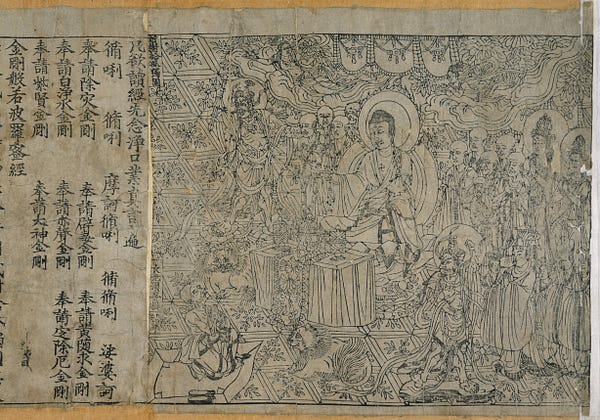
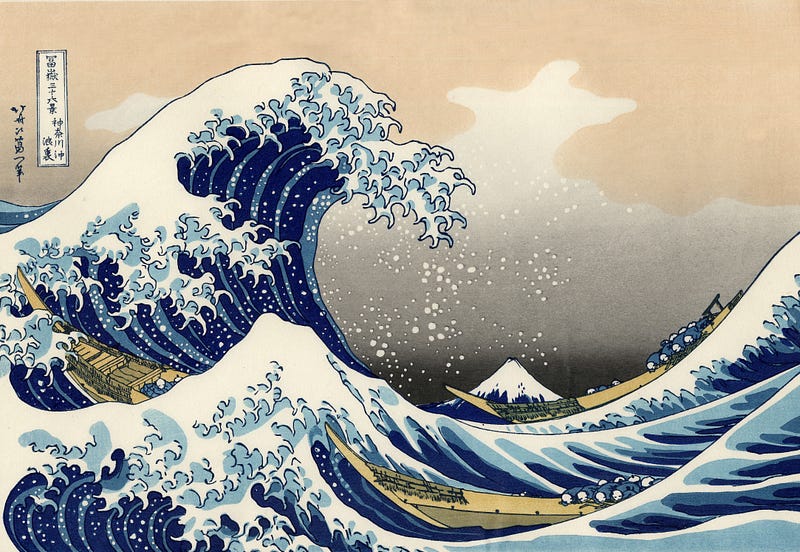
The earliest known example of woodblock printing is the Diamond Sutra from China’s 9th century Tang Dynasty, while arguably the most famous is Hakusai’s “The Great Wave Off Kanagawa” from the 1830s. (Images: Wikimedia Commons)
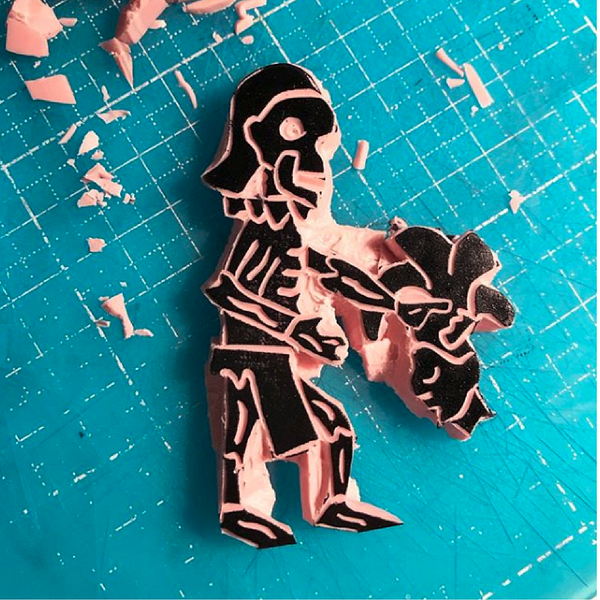

The woodcutting technique also applies stamp-making, as illustrators carve their designs in small rubber or linoleum blocks. Noun Project creator Zack McCune hand-carves rubber stamps before tracing their forms in Adobe Illustrator to digitize them.
Pencil Illustration
Pencil Illustration remains the most common and popular types of illustration for its simplicity and ubiquity. Pencils come in a wide variety of weights, hues, and values — lead or graphite, mechanical or traditional, and of course colored pencils — that produce direct and immediate results on the page. Subtle shifts in pressure and experiments with fine line work or broad shading allow even young children to begin expressing ideas easily. With its low barrier to entry, pencil is typically the first “go-to” option for illustrators — and budding artists may be seen carrying sketchbooks around for their no-muss portability.
Pencils can, however, be limited in their blending ability — you can’t easily combine two colored pencils to make a new secondary color as you would with paint. It may also take a special blending tool, such as a roll of paper or kneaded eraser, to smooth over the naturally rough texture of lead or graphite on paper.
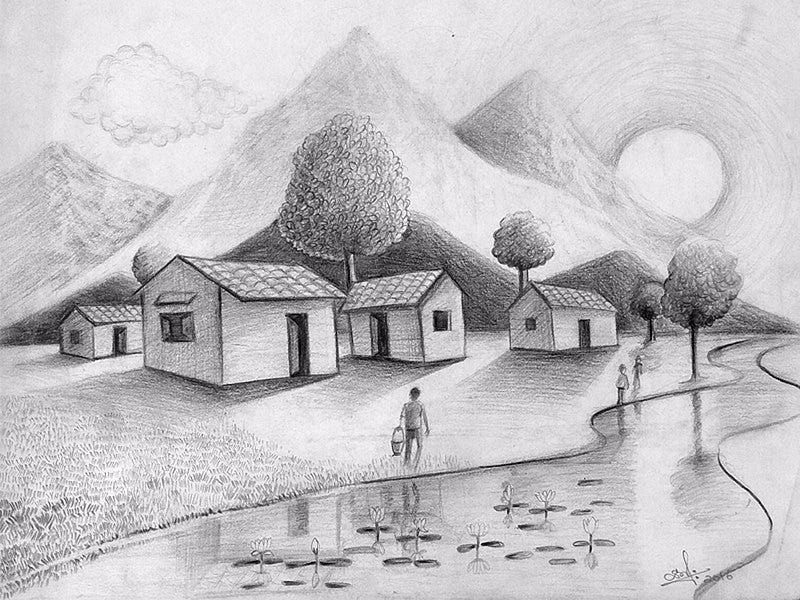
This Perspective Pencil sketch by Shivendra Tumram shows the wide range of shadows and highlights available in a monochrome palette.
Charcoal Illustration
Charcoal allows an illustrator more blending capability than a pencil, at the expense of a pencil’s precision. Charcoal may come in pencil or stick form, but is often a more rough, chalky tool for scraping dense, black particles onto paper. Typically, charcoal lends a more striking contrast as it’s a darker black than the standard pencil. It can also be blended (often smudged by fingertip) to provide smoother shading than pencil work. Charcoal is often used for quick sketches and proof-of-concept work; given that it isn’t easily erasable, it encourages a more fearless stroke of commitment from its holder. Instead of mending small mistakes with an eraser, charcoal illustrators will continue to actively practice and hone their strokes by creating ever darker and bolder lines throughout their figures.
Charcoal makes darker lines but isn’t as easily erasable as pencil– it thus encourages illustrators to make gestural yet decisive strokes and not dwell on small mistakes.
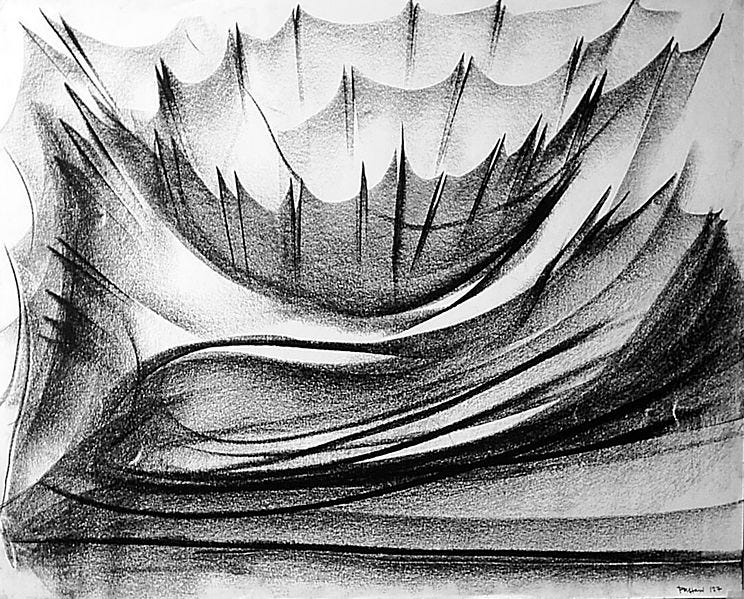
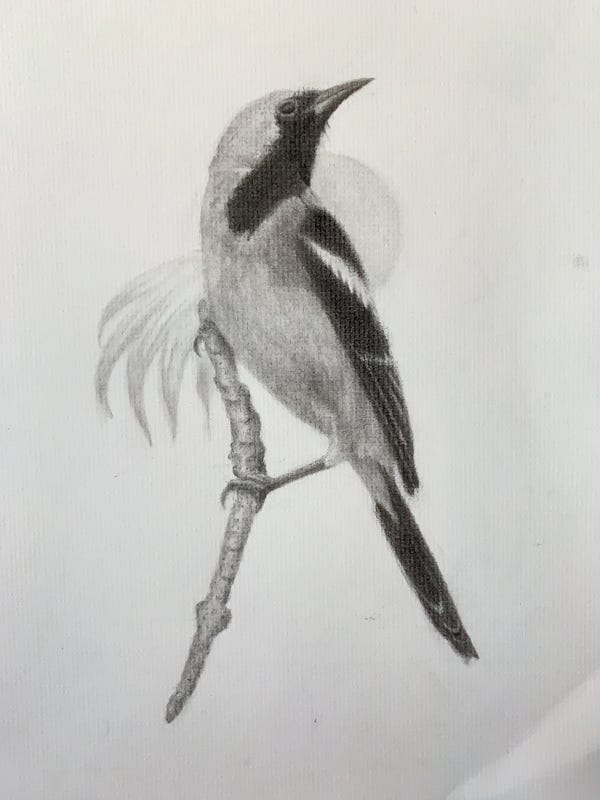
Charcoal illustration typically lends itself to quick, rough, and high-contrast impressionist sketches as charcoal can be blended but not erased easily. Artists like Paffard Keatinge-Clay (at left) may use it to make fast studies of light, form, and contrast, while designer Jozef Bañuelos (at right) goes over a pencil sketch using charcoal to add richer black shadow tones.
Watercolor Illustration
Watercolor painting is done by blending a small amount of pigment with water, making for a more light, liquid, and diluted paint (rather than the thick, pasty essence of oil or acrylic). With water as the primary substance, light can easily permeate through watercolor illustrations and lend them a soft, airy, and sunny feeling. It’s an ideal substance for illustrating more impressionistic scenes that don’t require precise detail or dark, bold, fully-saturated colors. Working with watercolor, however, takes some finesse as it bleeds and blends across the page with less control than most other materials — and works best for those who want to maintain the paper’s texture, as the thinness of the paint makes the underlying paper more visible.
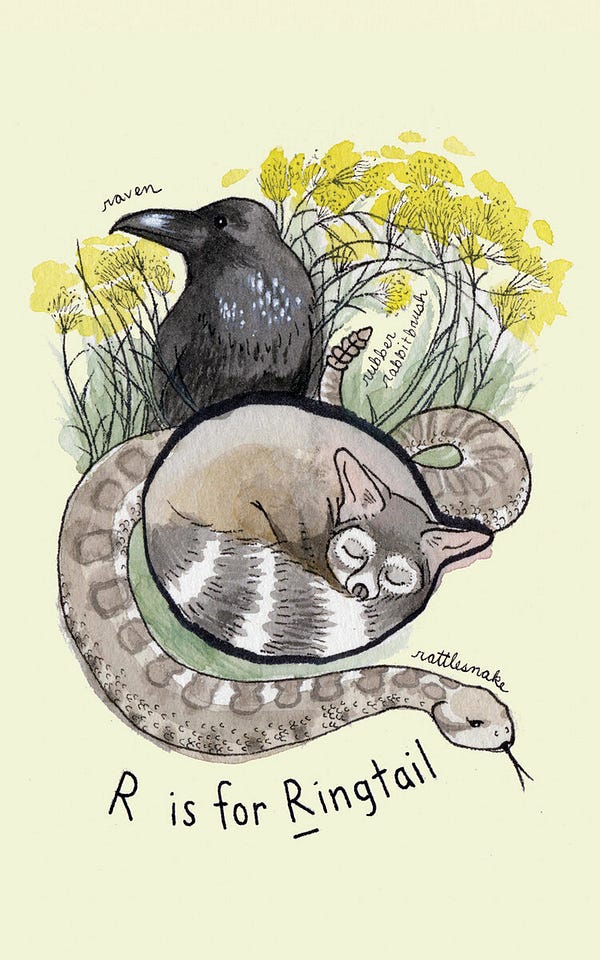
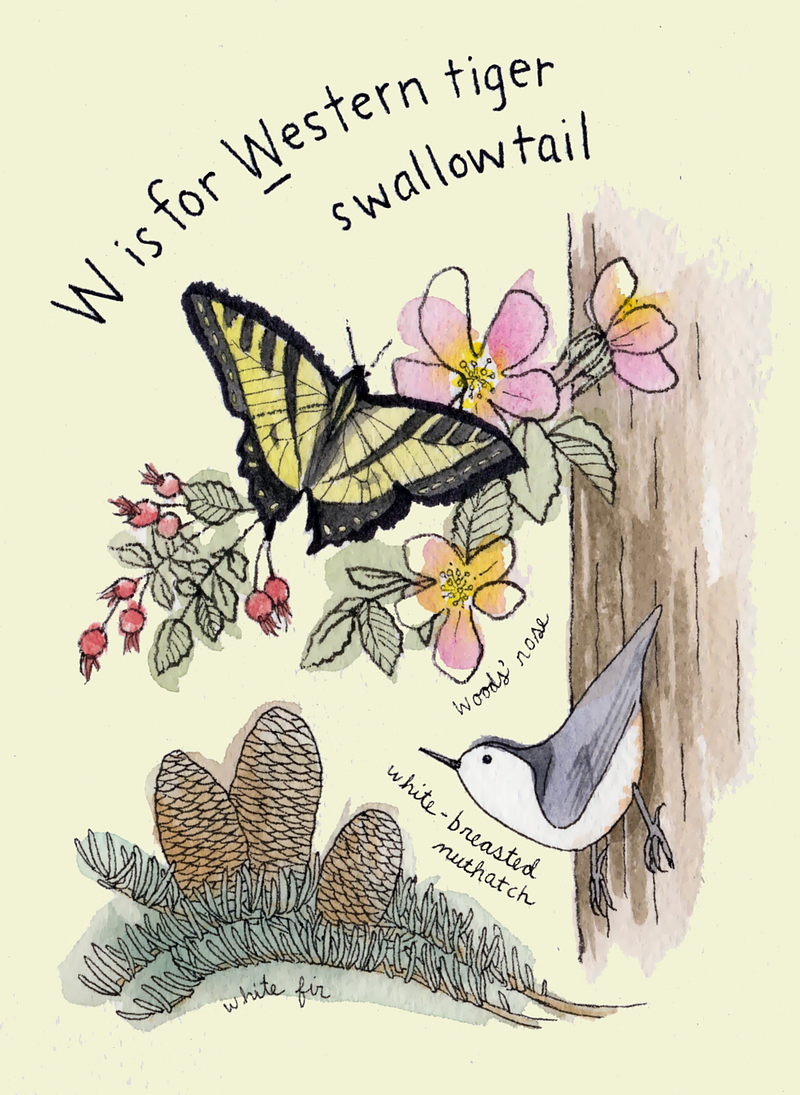
Watercolor and ink illustrations by artist and Noun Project creator Kadi Franson demonstrate the light and translucent properties of the pigment that often bleeds across the page while leaving the paper’s texture visible.
Pen and Ink Illustration
Pen and ink illustration is among the most common illustration styles next to pencil, and allows for even more precision and sharper contrast. As opposed to the rough texture of colored pencil, ink pens allow for smoother and more solid lines — but like woodblock carving, shading often has to be done with a series of fine lines and crosshatches as the colors don’t blend like paint. Pens can come with an assortment of different-sized tips, and often specialized artists and illustrators will opt for more old-fashioned fountain pens, which let greater volumes of ink come out with increased pressure. Fountain pens are often the choice tool for calligraphers who want to vary their line weights in a single stroke by altering the pressure.
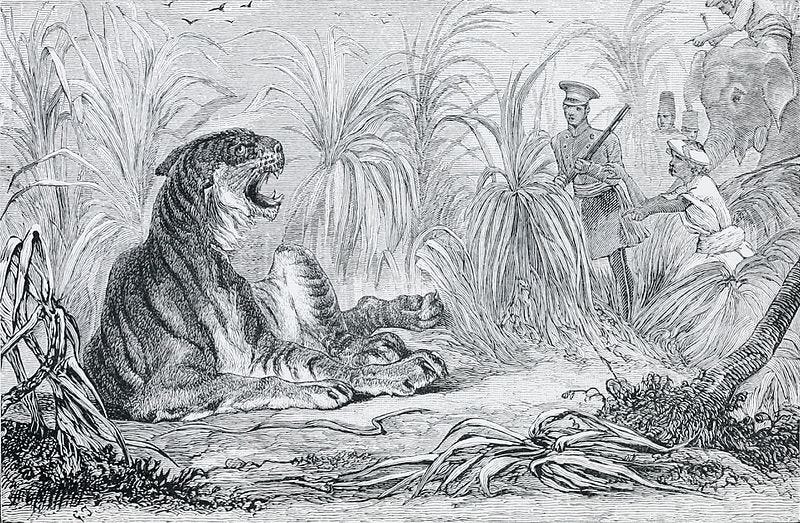
An 1883 pen and ink illustration by W. H. Hutchisson demonstrates how shading is achieved with a higher density of fine black lines and crosshatches. The heavily textured style of pen and ink thus tends to give such drawings a naturally historical look.
Acrylic Illustration
Illustrating with acrylic paint is a popular method that’s also suitable for beginners, as acrylic’s texture and thickness allows it to be easily applied and blended without the unpredictability and “bleeding” effect of watercolor or oil paint. Acrylic illustrators can blend an endless spectrum of different colors on a palette, making it among the most versatile illustration methods. Furthermore, acrylic’s quick-drying and water-resistant qualities leave less room for error than other types of paint. Acrylic can be applied to a cloth or canvas (note that it’s too strong for most types of paper) in large, flat swaths of pure color, or can be blended, mixed with varying quantities of water to thin it out, or layered in thick peaks on a surface to lend 3-dimensional texture. Acrylic illustration is thus a highly versatile medium that can be used for anything from painting children’s books to promotional materials.
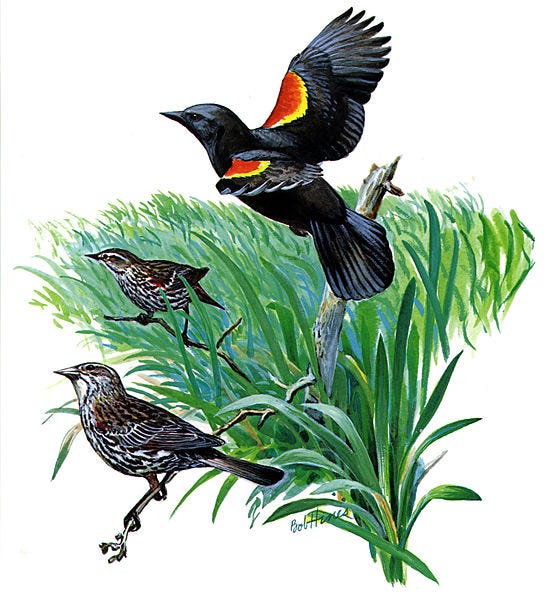
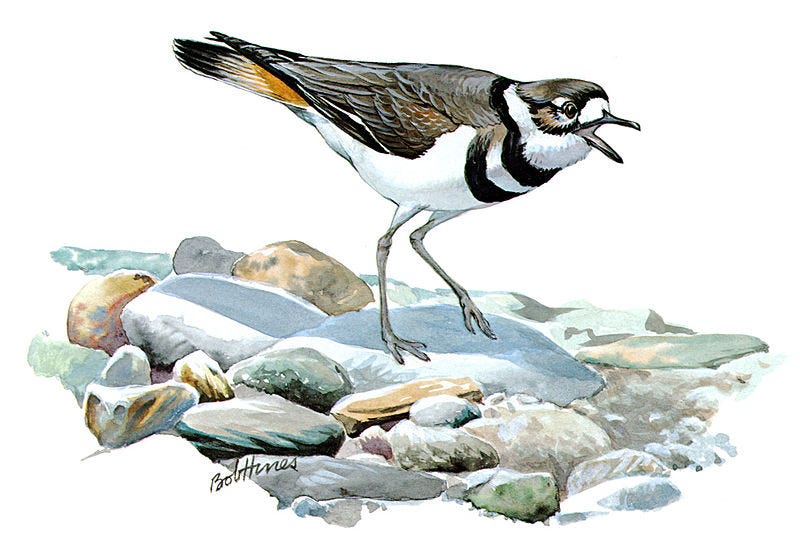
Acrylic bird illustrations by Bob Hines show the rich versatility of acrylic paint, with fully saturated hues and the ability to endlessly blend colors to make smooth gradients.
Modern Style Illustration
Much of modern illustration design, since the late 1980’s to today, has been done with computer programs. Increasingly smart and capable apps allow people to quickly combine shapes and lines as well as instantly recolor their artwork, so endless combinations of text, graphics, and even photo-collages are just a click away. As most modern illustration programs have a dazzling array of effects and filters, illustrators can maintain the spark of experimentation and discovery as they design on the screen.
Freehand Digital Illustration
Programs like Adobe Illustrator, Procreate, Corel Draw and Affinity all allow users to pick up digital tools like paintbrushes and pencils, and freehand-sketch their ideas as one would with pencil and paper. Typically, a digital tablet with a touch-sensitive stylus (such as the iPad and Apple Pencil) is the preferred method as it most closely replicates the experience of drawing on paper. While these illustration programs allow for more precise commands, measurements, and duplication of image layers, certain illustrators may opt for the more straightforward, old-fashioned method of freehand drawing to maintain the expressive and gestural qualities of traditional illustration. Furthermore, the variety of brush presets, as well as additional plugins that can be downloaded, let digital illustrators experiment with all sorts of textured brushstrokes yielding varied effects.
Vector Graphics Illustration
Vector illustrations are among the most popular mediums for contemporary graphic designers, and are typically done using one of the aforementioned illustration programs or their close equivalents. While raster-based programs like Photoshop are based on pixels, vector art is computed mathematically such that you can zoom far into your illustration without pixelation or loss of resolution. As such, vector illustration is a popular way to make logos or other branded assets that can appear on a mobile screen or be blown up to billboard size.
While people may draw freehand lines and shapes within a vector program to maintain a “human touch” in their aesthetic, the mathematical nature of these programs lets users draw and connect precise anchor points, adjust curvature, and combine various geometric shapes across multiple layers. Most icons on the Noun Project are illustrated with such a geometric precision — snapping basic shapes onto a grid, adjusting line weights to appear more uniform, and auto-aligning different elements are just a few ways that vector illustration programs help create pristine and “pixel-perfect” styles. Programs like Illustrator and Corel Draw also allow you to export your illustrations with or without a transparent background, as a .PNG, .SVG, PDF or other file format.
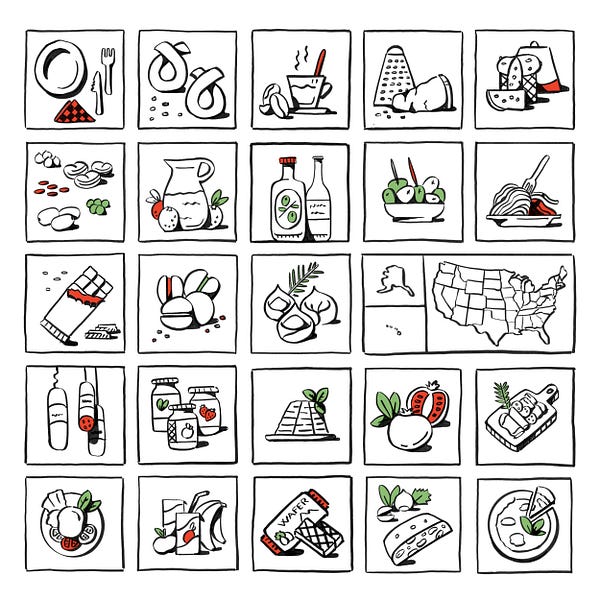

Noun Project creator Elisabetta Calabritto exhibits both styles of digital illustration — at left, the “freehand” style maintains the more hand-made and imperfect aesthetic of drawing manually, while at right, a more rigid vector illustration design sees involves geometric forms snapped to an even grid and adjusted with pixel-perfect curves and lines for a clean, streamlined, minimalist effect.
Different Illustration Styles: Types of Genres
Each medium described above can be used for an array of different purposes, from digital outputs to physical products. Here are some of the most common types of illustrations:
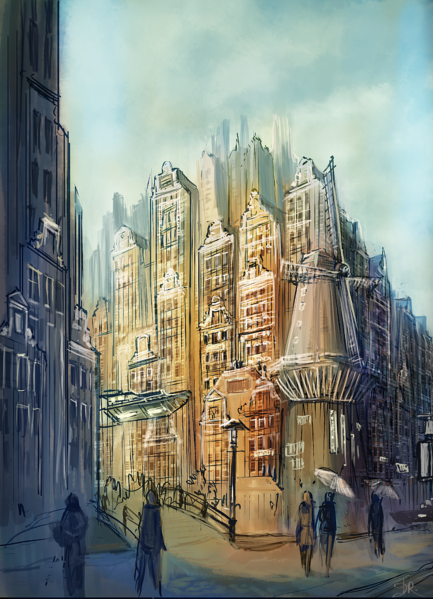
“Amsterdam: Past, Present, and Future” by David Revoy is a concept sketch that evokes an overarching scene with only the broadest strokes, rather than filling in every detail.
Concept Art
Concept art can be described as an illustration that depicts a particular idea, figure, or environment at the broadest level without a need for finalized, committed details. Designers who create video game environments may need a quick “proof of concept” to show the look and feel of a certain video game level — conveying the lighting, perspective, and textural or material qualities of a space before they begin to flesh it out. Similarly, many industrial designers (such as carmakers), fashion designers, or even theme park designers may call upon a concept artist to contribute quick illustrations of what a commercial product or physical environment can ultimately look like, before other specialists dig into the detail.
Children’s Books
Children’s books are among the most common places where we encounter illustration, and also among the most popular outputs for beginning or experienced artists. Given the wide variety of topics, characters, and fantastic worlds that children’s book authors regularly concoct, illustrators can lend their own distinct styles to make simplistic, friendly faces to please young readers, or richly detailed fantasy worlds to ignite budding imaginations. From early hand-drawn classics like Alice’s Adventures in Wonderland, to contemporary computer-illustrated favorites, children’s book illustration is a fine art and an ideal way to hone your illustration skills, responding to multiple prompts with a creative vision.


Walter Crane’s illustrations for the classic “Goldilocks and the Three Bears” use a harmonious color palette and just enough detail to make a visually absorbing scene.
Comic or Graphic Novels
Comics and graphic novels are a medium unlike any other: a work of literature that can unfold like a movie. If you want a more intensive way to practice illustrating, comic books may be the way to go — showing characters undergoing a sequence of actions, frame by frame, means you’ll need to maintain graphic consistency and get to know the figures of your story from every angle. Creating graphic novels is an ambitious venture that merges precise, detailed illustration techniques with the more fine-yet-subtle art of pacing. Illustrators must allow the story to unfurl through scenic “shots,” and include dialogue or narration in speech bubbles. Social media has also inspired a steady wave of web comic illustrators, who make often delightful, short-form funnies that may even incorporate animated elements and deliver a joke within just a couple frames.
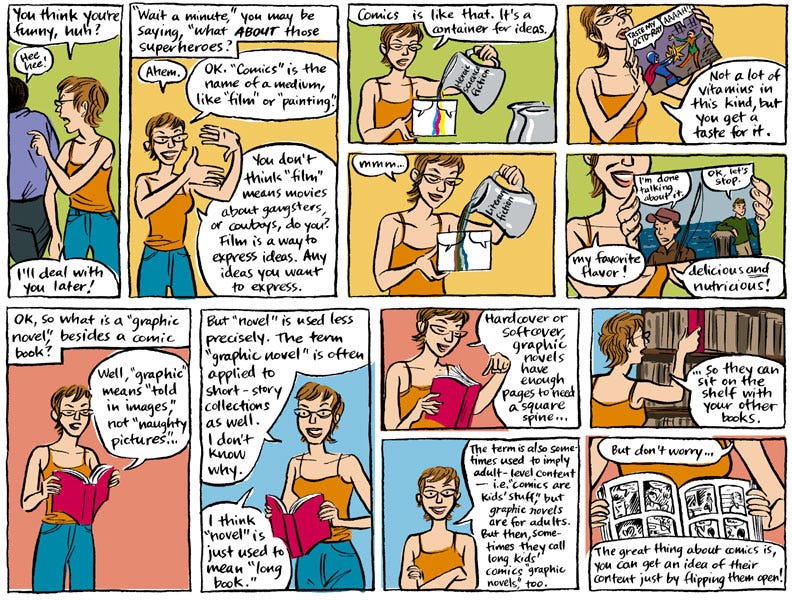
Jessica Abel’s “What is a Graphic Novel?” is, conveniently, a presented as one itself.
Books or Publications
We all know you shouldn’t judge a book by its cover, but when that cover is extremely well-designed… well, chances are you’ll give it a bit more consideration, regardless of whether it’s good. Book cover illustration, like most types of art and design, is often dictated by visual trends that come and go — the airbrushed, painterly sunset scenes of ’90s romance covers have made way for more understated floral designs and elegant typography. Creating book or magazine covers is a popular output for today’s designers and illustrators, as they can internalize the feeling and message conveyed by the work to create an eye-catching cover that’ll stand out on the shelves. The endless variety of topics covered makes for endless visual possibilities, and makes a magazine or work of literature into a more marketable, packaged product.


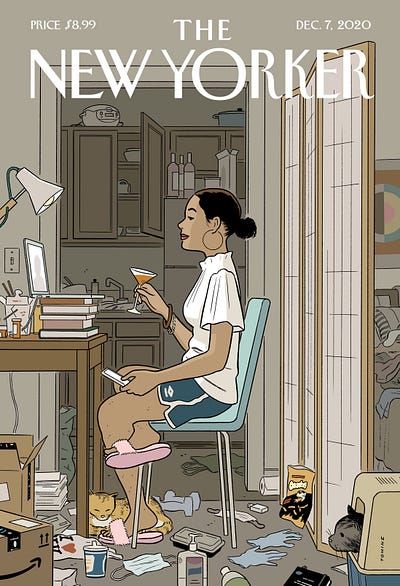
Covers of The New Yorker magazine, from the 1920’s to today, have long been a paragon of unique and unforgettable illustration design. All different stripes of artists and illustrators contribute distinct types of illustration that often allude to current events, news headlines, or lifestyle trends.
Advertising
While much of modern advertising tends to rely on photographs (of products, people, or places), an illustration may be just the ticket for a brand that’s establishing a fresh, creative identity for itself. In the olden days, advertisements for common products like canned foods had to be illustrated anyways, as photography wasn’t quite as ubiquitous. These days, illustrated advertisements are a surefire way to stand apart from the competition, as placing vibrant, hand-drawn or vectorized decorations, flourishes, or unique figures and scenes can make a more striking effect than a photo — and make a more lasting impression on an audience.
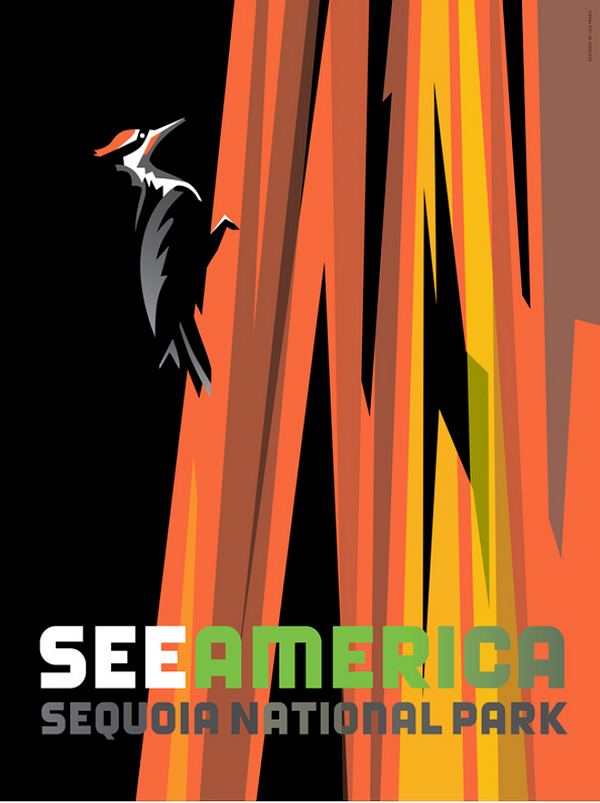

Sometimes, an illustration (rather than a photograph) is what you need to help your advertising stand out from the competition. Here, Creator Luis Prado adds a distinct visual signature to some of America’s most iconic landmarks in a National Park advertising campaign.
Packaging
Like illustrating book covers, designing product packaging can convey authority, relevance, or any number of brand sentiments like fun and playfulness to help a product stand apart. Illustrators internalize brand sentiment on a broad level (industrial strength for a tire company; childlike playfulness for a pack of gummy worms) and translate it onto their packaging. Most often, illustrators will be called upon to design for more on-trend “lifestyle” brands that want to appeal to younger, hipper audiences — the ability to convey a human touch or sense of playfulness through vibrant patterns and expressive typography can boost appeal for food, beverage, apparel and other lifestyle brands.
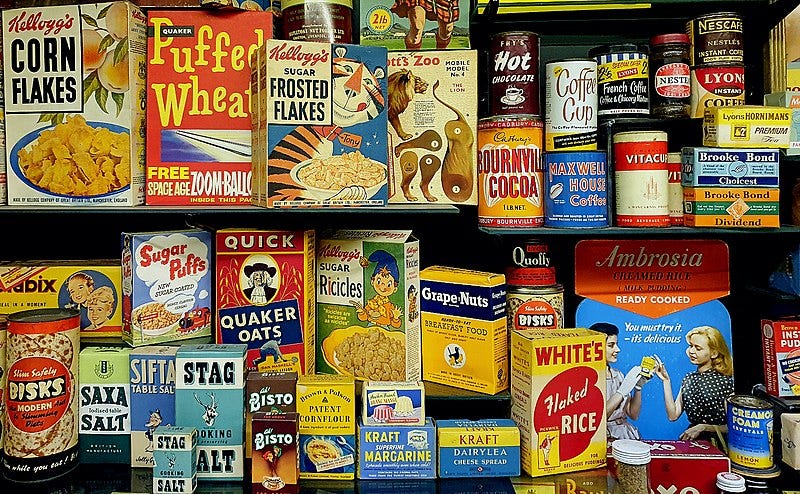
Illustration has been a key part of product packaging for over century, largely for the practical fact that photographic printing wasn’t available or largely scalable until the latter half of the 20th century. Today, brands still turn to illustrators to make visually distinct, colorful designs. (Photo: Museum of Brands in London, England)
Branding
Brand logos should be among the most memorable parts of encountering a brand — yet often, a simple geometric logo that comes across as overly bland or corporate might be the most forgettable. Bringing in an illustrative logo can be key to making more brand distinct, as it can highlight your company’s personality and brand values. As opposed to other logo types, an illustrated logo brings back that human touch by depicting a person, character, or other figure with more detail than the average geometric shape. Just ensure that your illustrated logo can scale down to a small size for placement across a wider variety of formats.
Start Your Next Illustration at Noun Project
Artists, designers, and illustrators of all types turn to Noun Project for inspiration when it comes to depicting ideas in a quick, impactful way. Start your search for icons on thenounproject.com and continue to hone your illustration skills through observation and plenty of practice.


